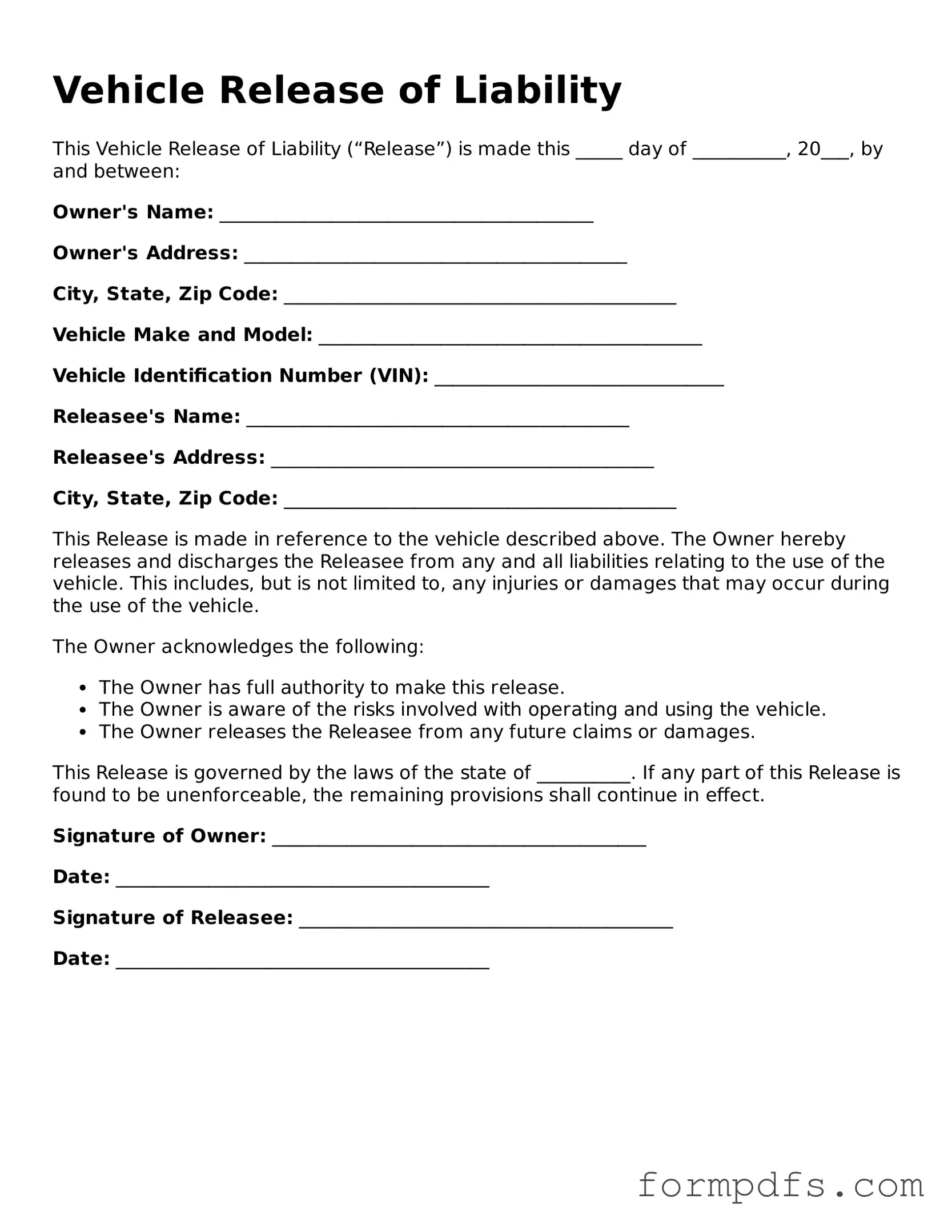What is a Vehicle Release of Liability form?
A Vehicle Release of Liability form is a legal document that protects the owner of a vehicle from being held liable for any damages or injuries that occur after the vehicle has been sold or transferred. This form serves as a written record that the owner has relinquished ownership and responsibility for the vehicle in question.
Why should I use a Vehicle Release of Liability form?
Using this form is important for both the seller and the buyer. For the seller, it provides proof that they are no longer responsible for the vehicle, which can prevent potential legal issues. For the buyer, it confirms that they have accepted the vehicle in its current condition, thus limiting future claims against the seller.
When should I complete a Vehicle Release of Liability form?
This form should be completed at the time of the sale or transfer of the vehicle. It is best to fill it out before handing over the keys to ensure that both parties have a clear understanding of the transaction and to avoid any disputes later on.
What information is typically included in the form?
A typical Vehicle Release of Liability form includes the names and addresses of both the seller and the buyer, details about the vehicle (such as make, model, year, and VIN), and the date of the transaction. It may also include a statement releasing the seller from any future liability related to the vehicle.
Do I need to have the Vehicle Release of Liability form notarized?
Notarization is not usually required for a Vehicle Release of Liability form, but it can add an extra layer of authenticity. Some states may have specific requirements, so it is advisable to check local regulations to ensure compliance.
Can I use a Vehicle Release of Liability form for a donation?
Yes, a Vehicle Release of Liability form can be used for vehicle donations as well. It serves the same purpose of releasing the previous owner from liability after the vehicle has been transferred to a charitable organization or individual.
What should I do with the completed form?
Once the form is completed and signed by both parties, each should keep a copy for their records. It is also a good idea to submit a copy to the local Department of Motor Vehicles (DMV) if required by state law. This helps to officially document the transfer of ownership.
What happens if I don’t use a Vehicle Release of Liability form?
If a Vehicle Release of Liability form is not used, the seller may remain liable for any accidents or issues that arise after the sale. This could lead to legal disputes, financial loss, and complications with insurance claims. Therefore, it is strongly recommended to use the form to protect all parties involved.
